UPDATE! It appears that Polaris is no longer working with the manufacturer who designed and built these electric bikes, but that company is now selling their own line as PIM (Power in Motion) and you can connect with them through their official website at www.pimbicycles.com to possibly get replacement batteries, chargers, and other hardware. The following review stands on its own and represents the Polaris bike as I experienced it at the time.
The Polaris Sabre is an electric fat bike that offers a relatively balanced frame, unique gearless hub motor capable of power regeneration and a solid warranty. It’s not the fastest, lightest or most comfortable fat ebike I’ve tried, nor is it the cheapest… but it does offer a unique pedal assist mode that’s smooth and efficient. Unfortunately, that’s entirely necessary because the battery pack offered here just isn’t that large. The most impressive thing about the Sabre to me is that it’s made by Polaris (through a partnership with Evantage) and leverages several of their patents for motor control. It’s not a bad electric bicycle by any means but given the option to upgrade to the Polaris Nordic (with front suspension fork) and the many other electric fat bikes on the market now, this one just doesn’t feel that special. One of the big missing pieces for me here is throttle mode, my ride style for this type of bike tends to be more relaxed and a throttle is a welcomed feature. Still, having ridden several of the other 2015 Polaris ebikes the throttle wasn’t very impressive as power output seems linked to the gear you’re using to pedal with. There are some great components here, the frame is sturdy and stiff and the fat tires perform as you’d expect on soft terrain but it just feels a bit average to me at this higher $3,500 price point.
Driving the Sabre electric bike is an impressively specced 750 watt gearless direct drive hub motor located in the rear. Its peak output is 1,000 watts which sounds incredible but doesn’t deliver the zippy feel I expected. That’s because its output is tied to the gear you choose to pedal with (there are eight speeds to choose from with the SRAM X5 system). Being gearless, the higher wattage on this motor helps to make up for mechanical advantages that it misses out on (that geared motors and mid-drives get). One advantage to the gearless drive is that it runs a bit quieter (though it still whirs at lower speeds when climbing). Another benefit is toughness, there are no gears inside making contact with each other, just magnets repelling. Toughness aside, the main advantage is that you can use those magnets to recoup power with regenerative braking and that’s exactly what Polaris does here. Not only do you get regenerative braking (activated through either brake lever), but you also get two levels of regen mode which help to extend range when descending (use them like a motor brake on a car). In theory, this regeneration ability means you can get away with a smaller, relatively lighter weight battery pack.
The battery powering the Polaris Sabre offer a solid 44 volts of power with smaller 6 amp hours of capacity. It uses light weight, long lasting Lithium Manganese cells and can be charged on or off the bike. It also has a tough integrated lock to keep things secure if you’re parking in a public location and don’t want to bring the pack inside. If you do decide to take it off, the overall weight of the bike is reduced which makes it easier to transport. They’ve designed the pack to fit right into the top tube on this model and it’s actually interchangeable with other second generation Polaris electric bicycles. You can even get a second pack to extend your range or balance charging when commuting (one at home, one at the office) but they cost a pretty penny at nearly $800. As you can see, the downtube is very wide and sort of overbuilt for strength. This makes the bike a bit heavier but adds stiffness which means the frame won’t flex as much when you really push it off-road. At the end of the day, this battery really isn’t offering as much capacity as similarly specced ebikes and the power could be better. Given the heavier application of the Sabre and its less efficient tires it would have been nice to see a 48 volt battery with 10+ amp hours instead of just 6.
Operating the Sabre electric bike systems is pretty straight forward. You charge the battery, press the power button on the display console and the system comes to life. From here you can arrow up or down on the display to choose from 3 levels of assist or two levels of regen (perfect for coasting down hills or getting a workout). I’ve always been fascinated with regeneration modes on ebikes but the truth is, you don’t really get that much power back. The utility of the feature boils down to saving your wrists from squeezing the brakes constantly and offsetting some of the cogging and increased weight of a gearless hub motor. The handlebars and cockpit of this ebike are relatively straight forward with a nice pair of Tektro brake levers on both sides and a trigger shifter on the right bar. As mentioned before, you get eight speeds to pedal with and that’s solid for climbing or cruising but really isn’t “mountain bike” level in my opinion. It’s important to clarify here that motor power and speed are actually altered depending on which gear you’re pedaling with. So if you’re in a low gear for climbing, the bike will literally go slower and focus on torque vs. speed. It sounds great but doesn’t always feel satisfying and has left some people confused vs. satisfied and excited. Unlike some of the other Polaris ebikes, this one doesn’t offer throttle mode, you always have to pedal in order to activate the motor. This isn’t a bad thing in the sense that it motivates exercise and extends range but most of the other fat ebikes I’ve reviewed do have throttles and I kind of missed it here.
It didn’t feel great to open this review with a lackluster first paragraph but that reflects the “bla” feeling I got from this bike. Polaris has slapped their same drive system and battery onto nine different models for 2015 and while the Sabre benefits from a slightly modified “high torque” motor it didn’t feel that impressive to me. I want to temper this criticism however because the bike did perform as expected and felt very solid. I think it looks nice and even though it’s only available in one size and one color scheme, I trust Polaris and feel like they’ve invested a lot into this platform. The Sabre is their “entry level” fat bike but for $3,500 I feel like there are better options out there and wasn’t very impressed with the lack of bottle cage adapters, smaller battery size, weak motor performance (in lower gears) and squeaky disc brakes. If this bike were priced closer to $2,500 I’d be rating it higher but there were still many people at Outdoor Demo Day (where I tested this bike) that just didn’t like the new pedal assist used on any of the Polaris electric bikes. I for one, noticed that it didn’t cut out as quickly as expected when I stopped pedaling but found a workaround with the brake cutoff switch as described in the video review above.
Pros:
- The 750 watt hub motor used for the Sabre is configured for high torque which helps in starting and climbing vs. the standard motors on most other Polaris models
- Large oversized tires perform well in soft terrain like snow and sand, can be deflated for maximum traction but this reduces range significantly
- Offers three levels of pedal assist and two regeneration so you have multiple ways to use the motor when climbing or descending
- Reinforced threaded eyelets near the rear dropouts and seat stays for adding a carry rack (bring your charger, water or other gear)
- Mid-step frame design is a bit easier to mount than traditional high-step but the frame still has a top tube and downtube and stays very rigid, it feels sturdy
- Large 180 mm mechanical disc brakes offer great stopping power and the upgraded Tektro levers include motor inhibitors and integrated bell on the left side
- BioSync cadence sensor can detect gear shifting using an internal pulley, it uses this information to provide slow torque in low “climbing” gears and high speed in high “fast” gears
- Reduced wear on brake pads and extended range thanks to regenerative braking, two levels of regen and automatic regen based on bike speed and chosen gear
- Battery pack is beautifully integrated into the frame for improved balance and protection, locking and removable for convenient charging or reduced weight during transport
- Gearless direct drive motor is fairly quiet compared with a geared hub but does hum a little bit in the lower speeds (especially when climbing)
- Wires are hidden on the frame but remain accessible for doing maintenance, the display panel and motor have modular disconnects for easy service and replacement if necessary
Cons:
- Operates slightly slower than most of the other Polaris electric bikes with a maximum assisted speed closer to 18 mph vs. 20 mph
- The Polaris Sabre only comes in one frame size which might make dialing in the fit a bit more difficult for short or tall riders
- This ebike is heavier than similar electric bikes I’ve tested that use geared motors vs. gearless but the weight is fairly well balanced thanks to the battery position
- The battery pack offers relatively low watt hours and is very expensive to replace ~$800 though it can offer decent range thanks to the three assist levels and regeneration options
- At times, this ebike can feel less satisfying because the power output hinges on which gear you’ve chosen to pedal with
Resources:
- Official Site: http://polarisebikes.com/bike_EV505.php
- Official Manual: polaris-ebike-manual.pdf
- More Pictures: https://goo.gl/photos/meUEv2i4mAkjLR2X9

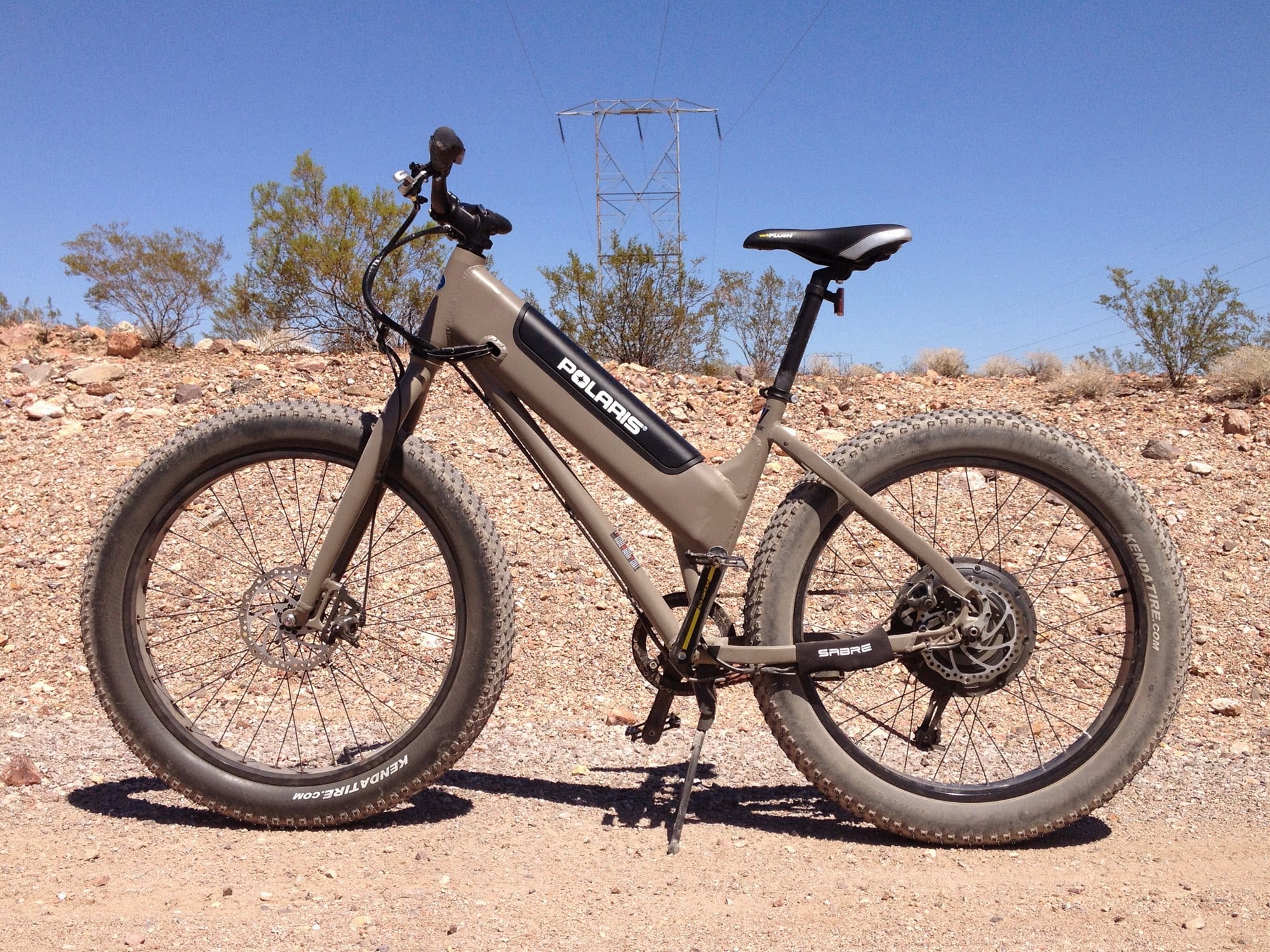
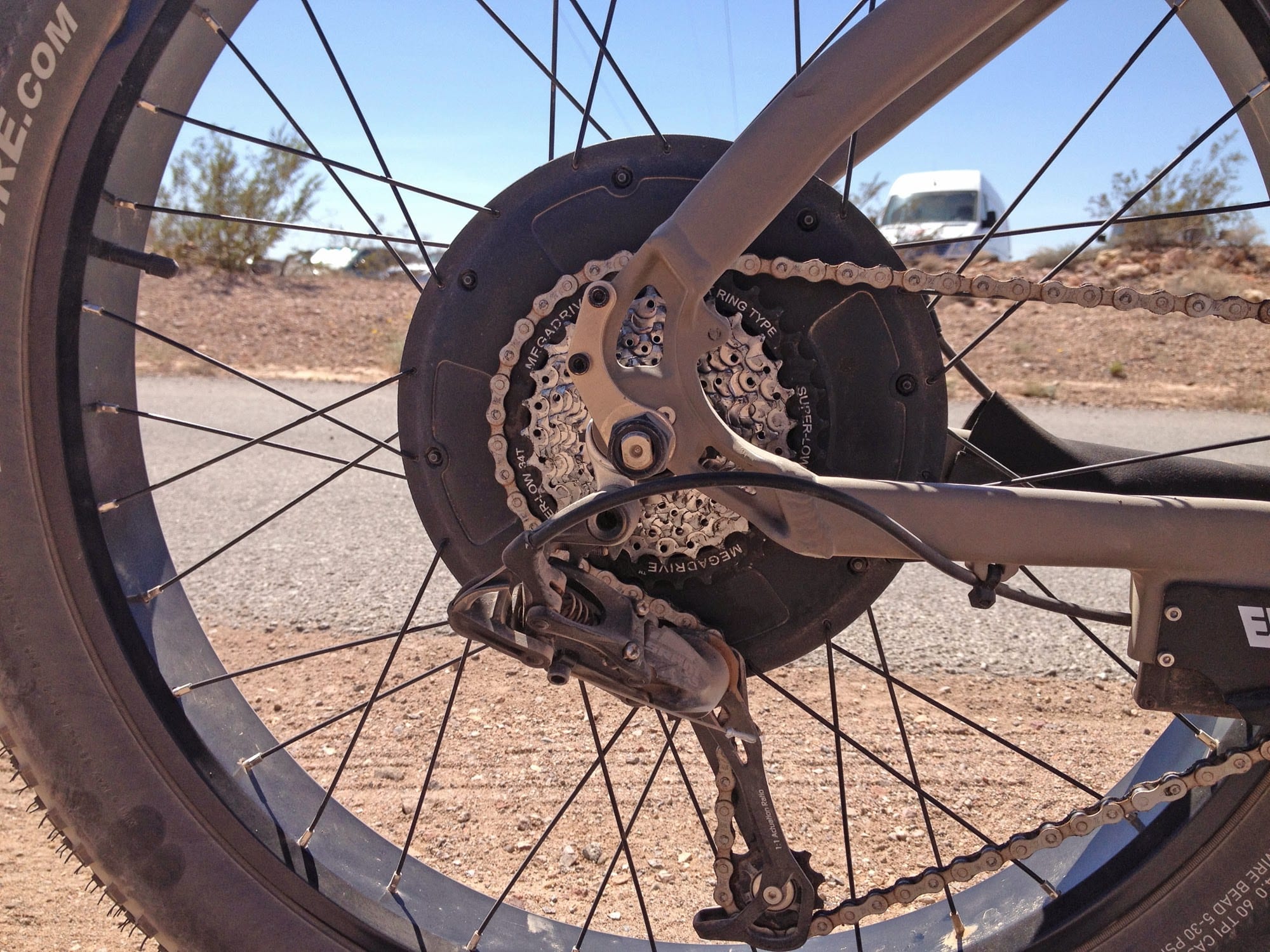
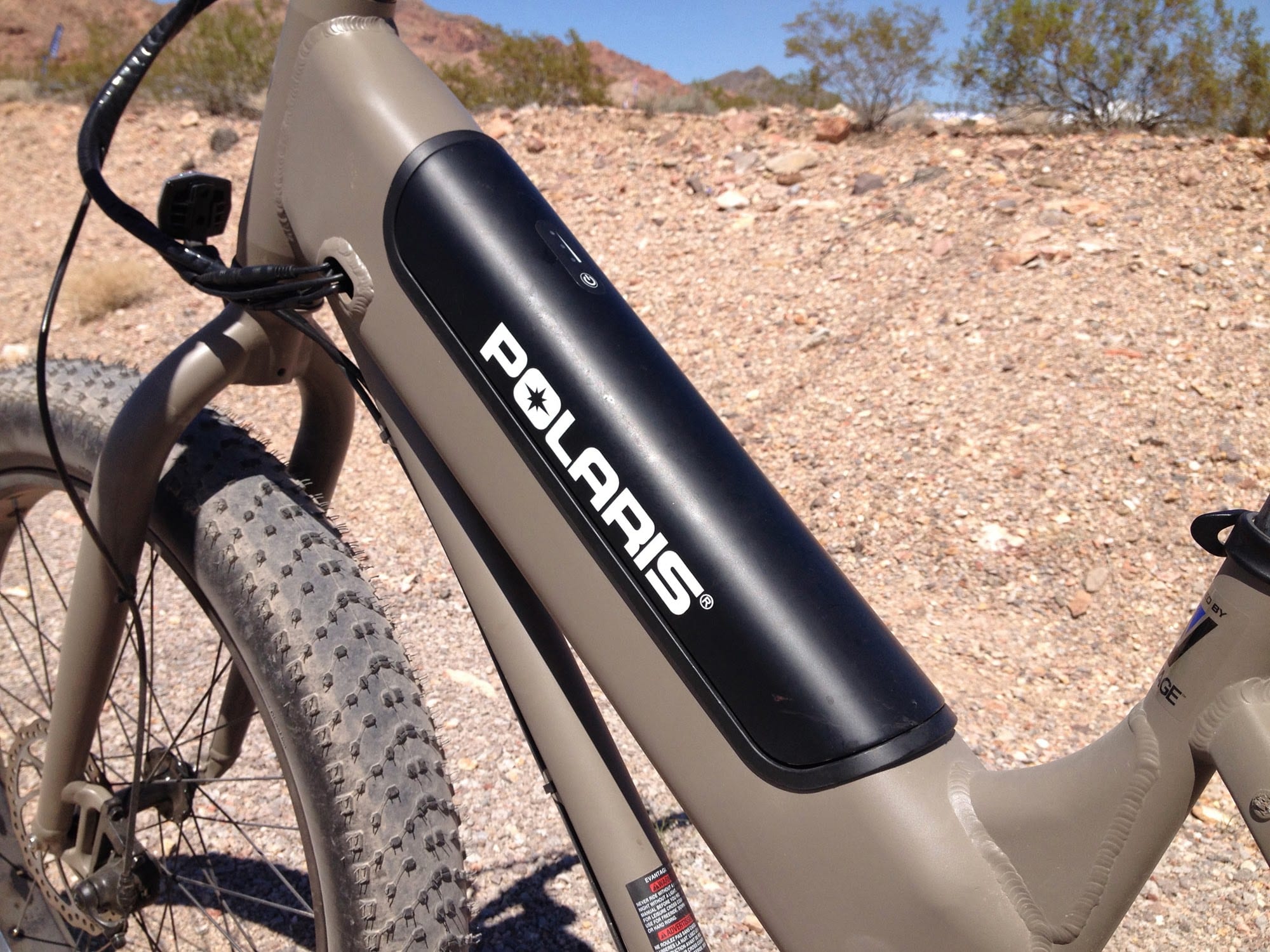
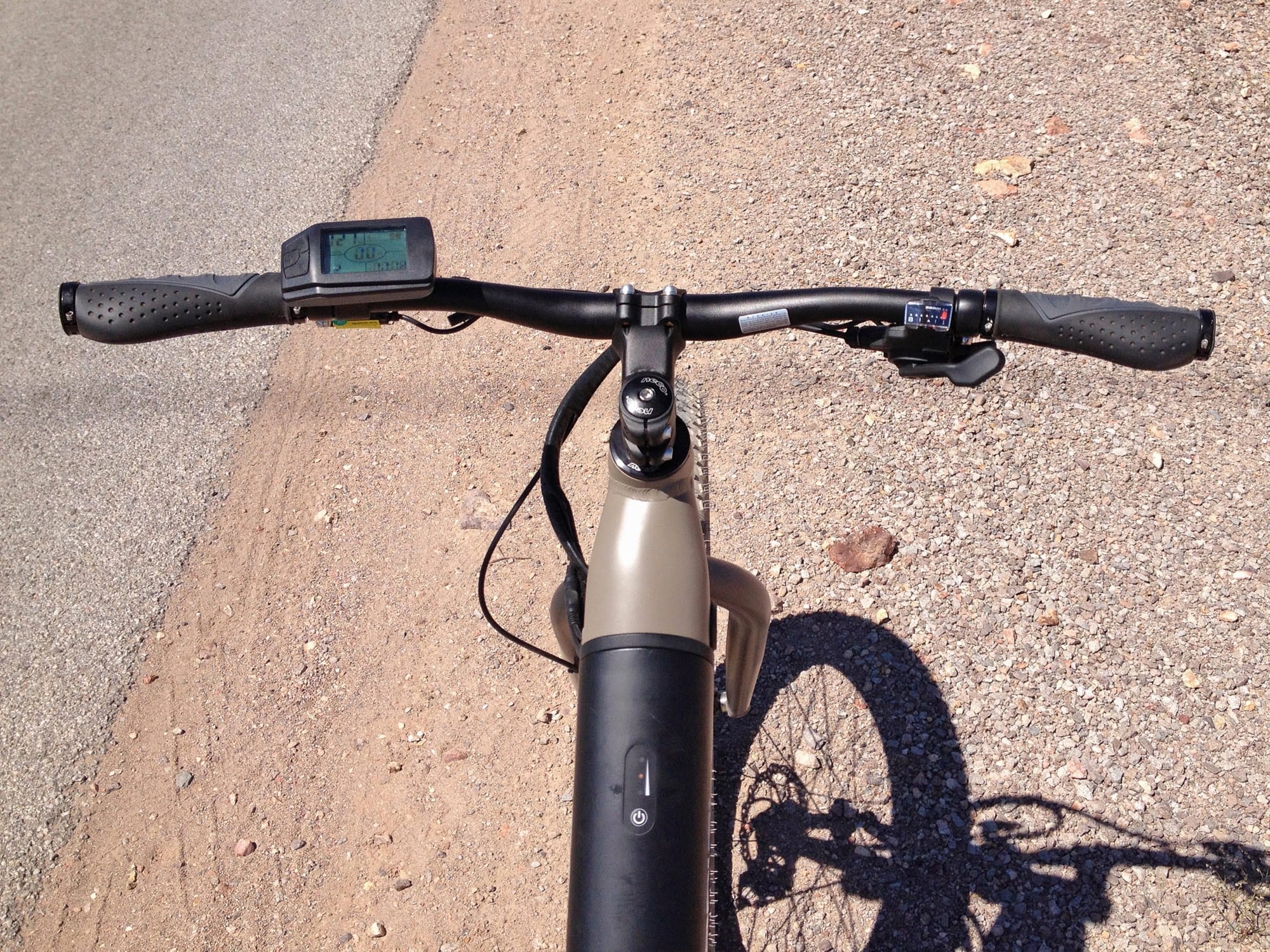
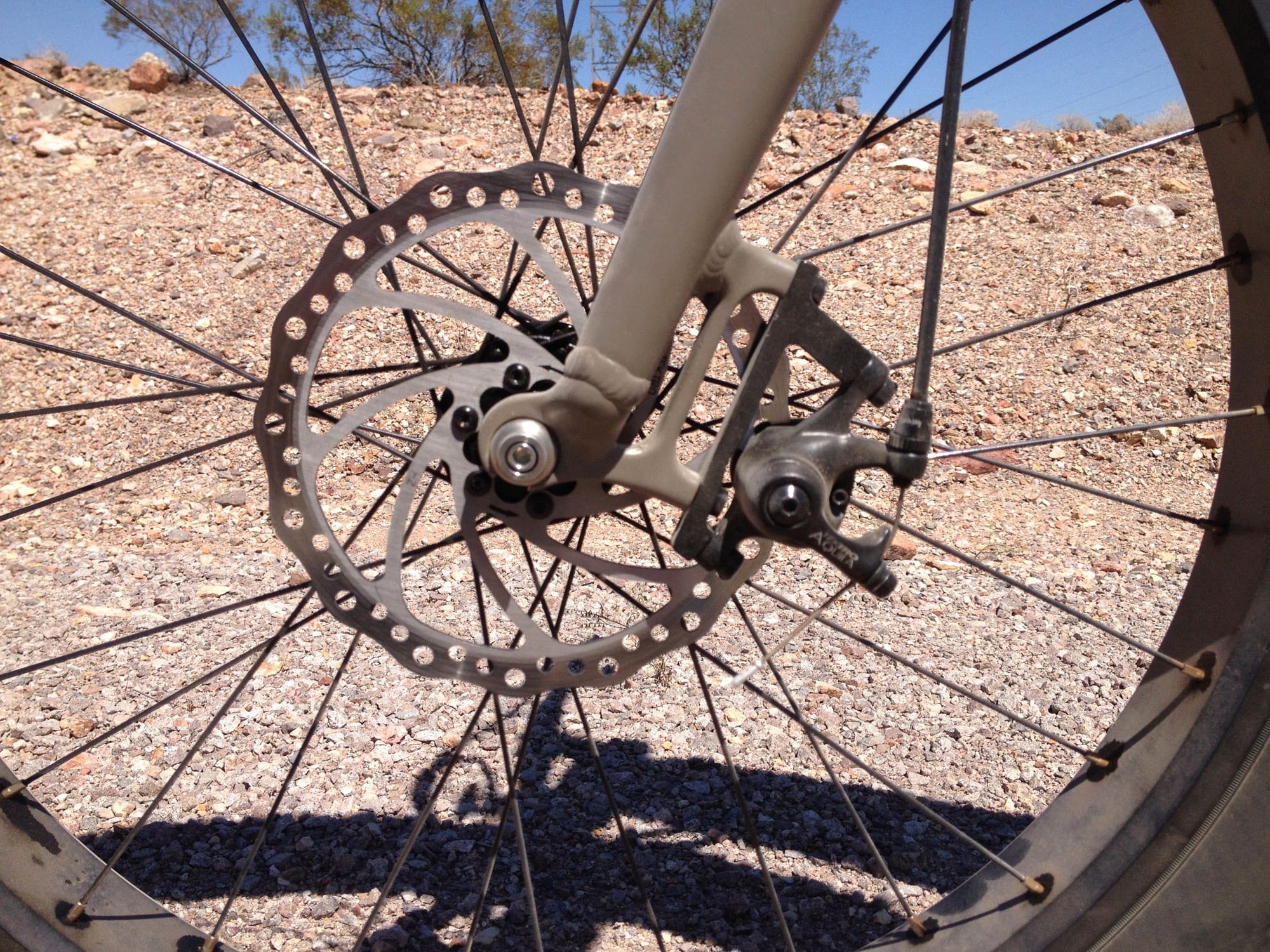
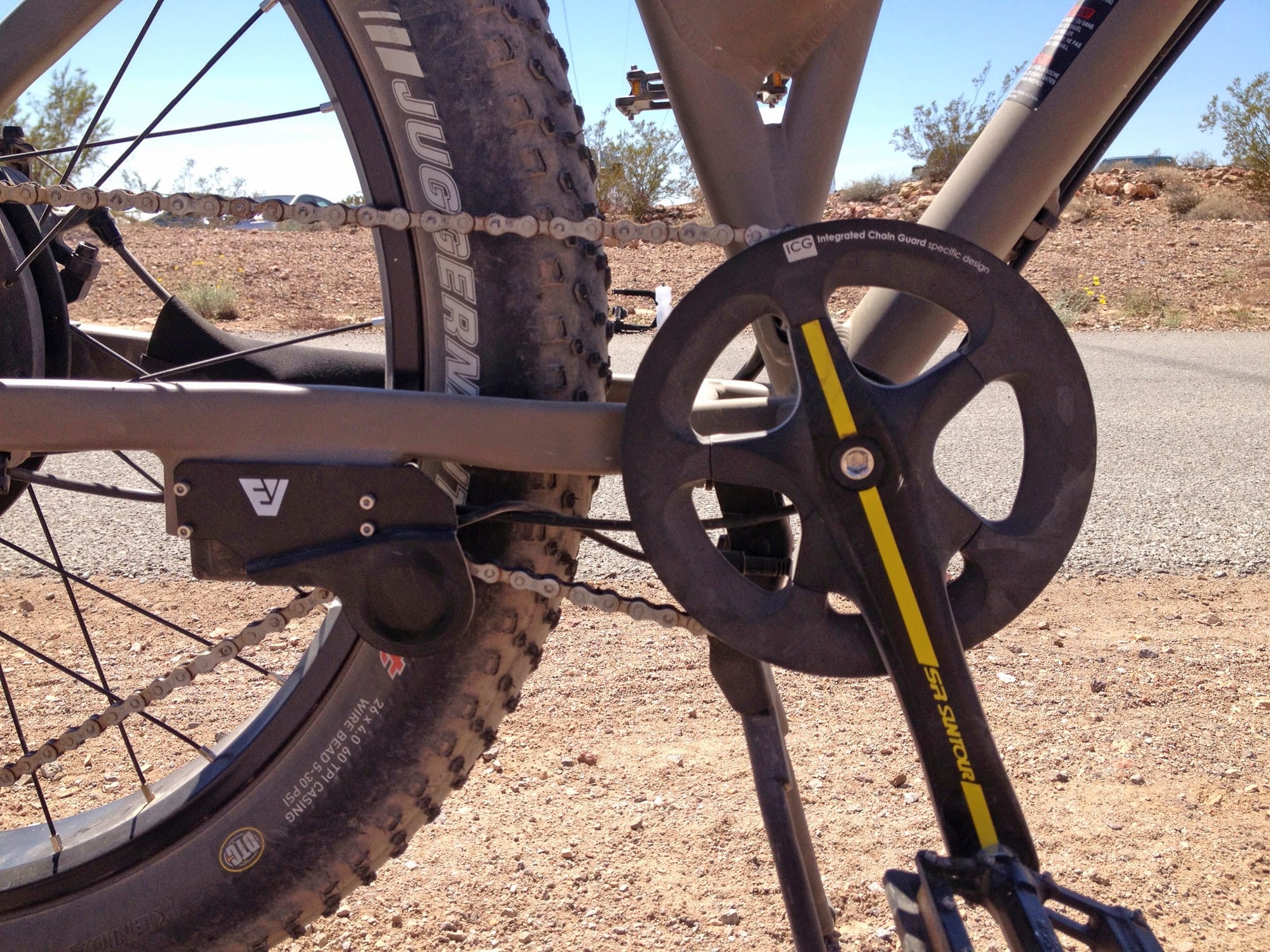
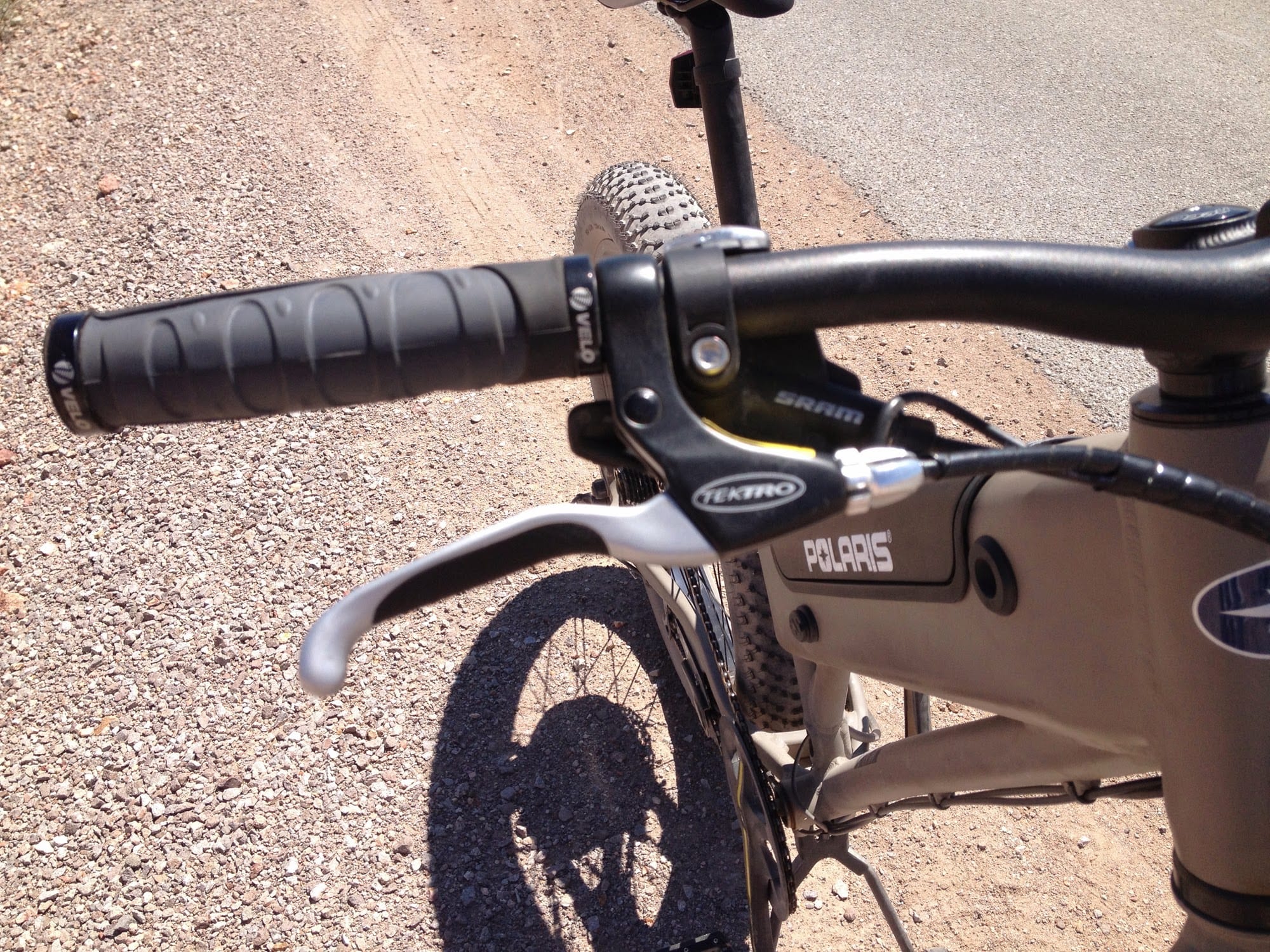
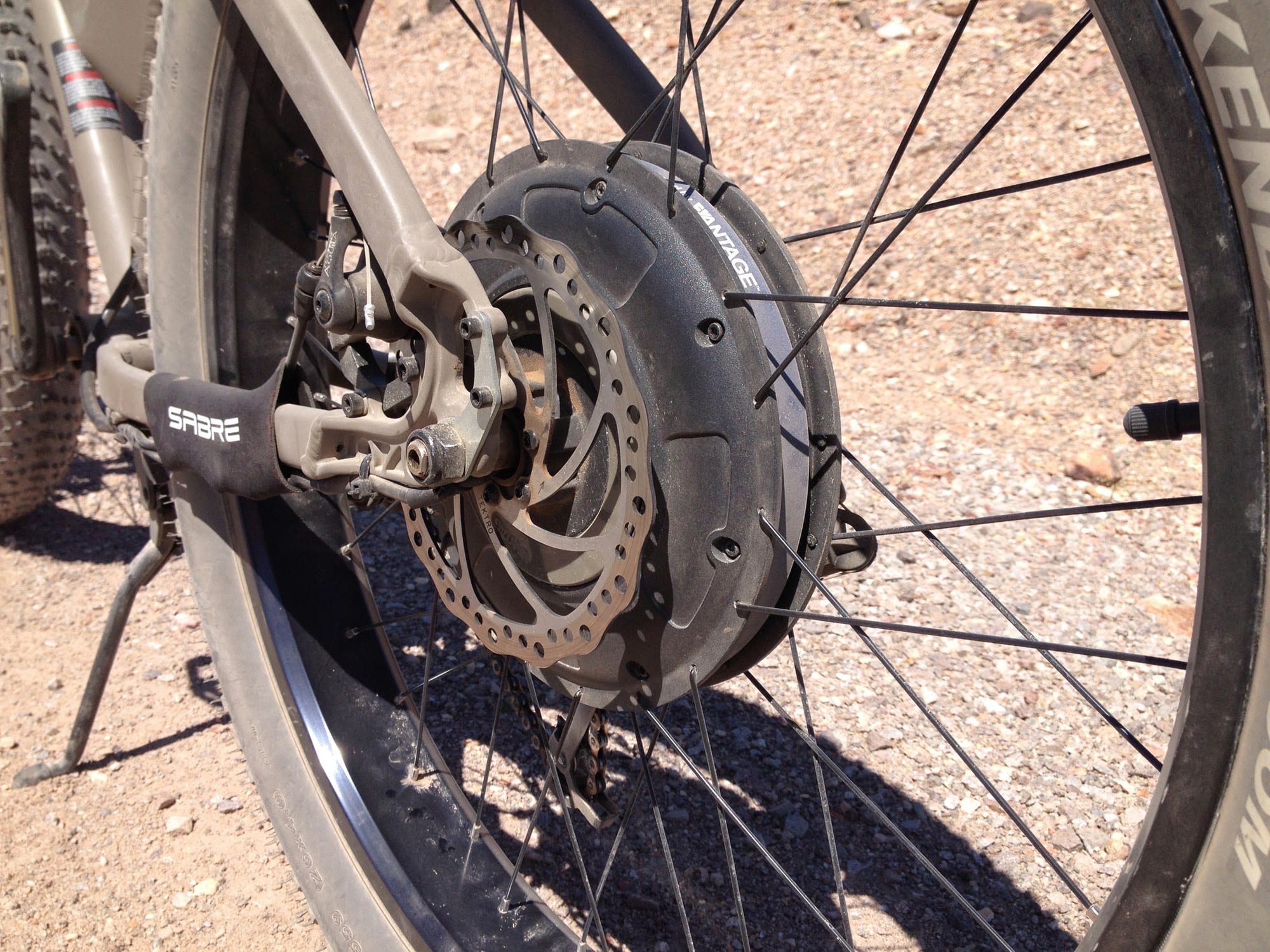

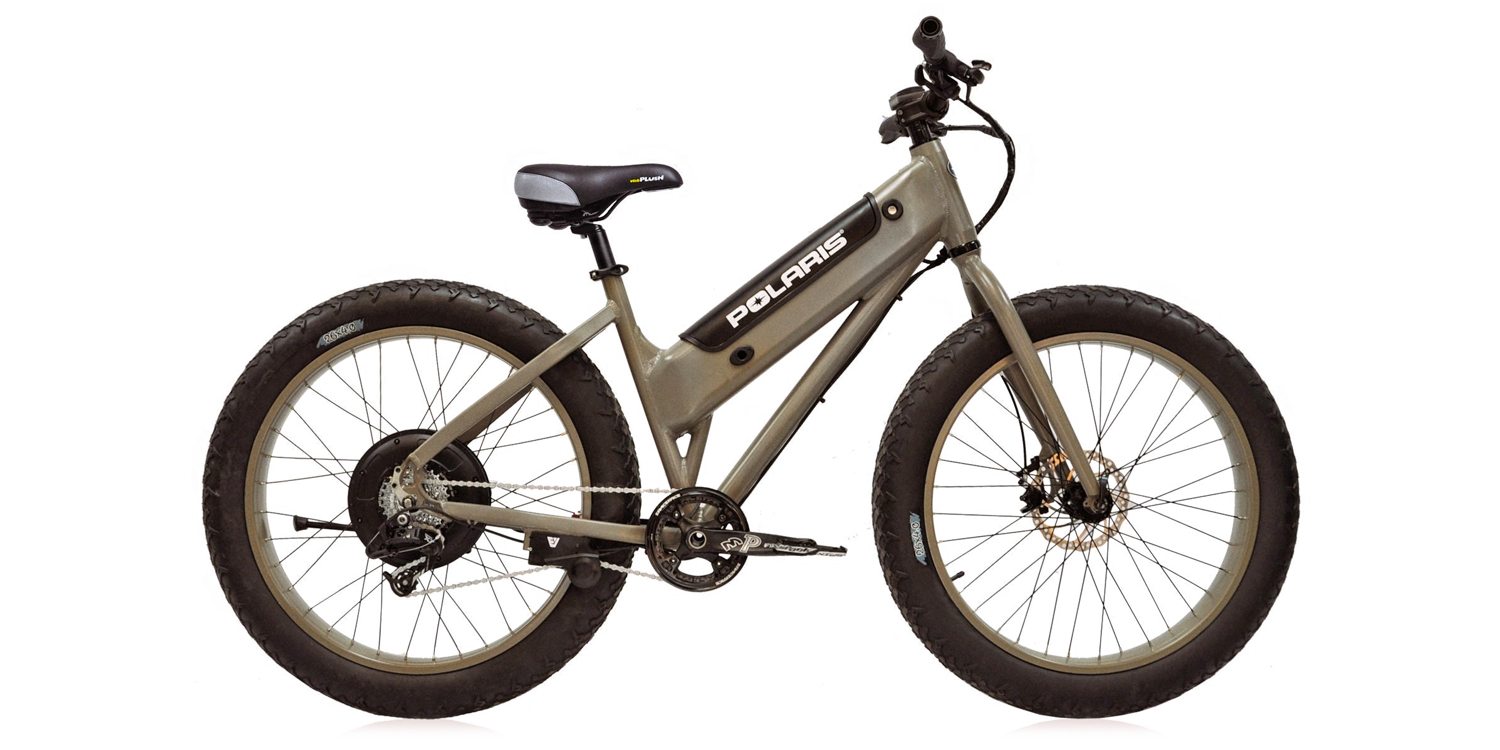
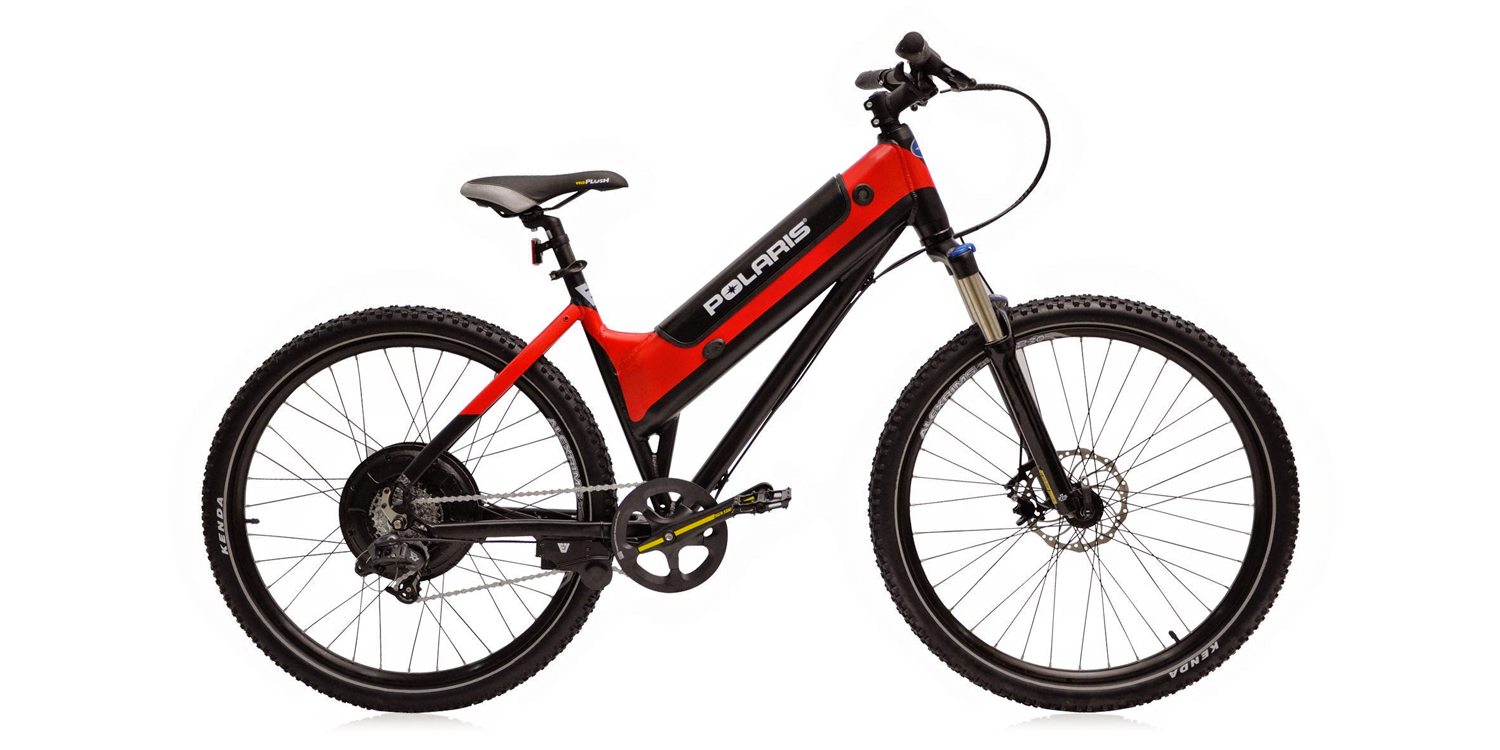
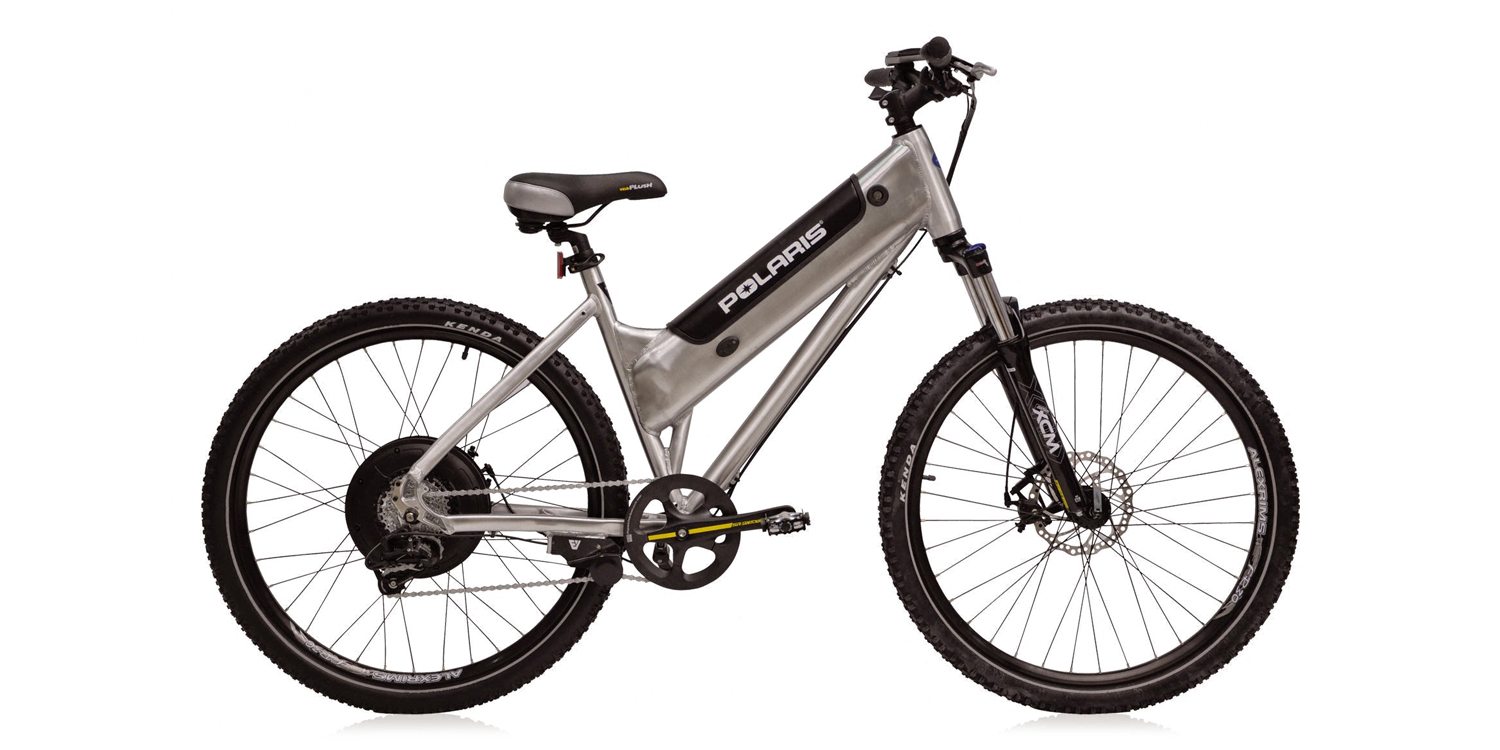
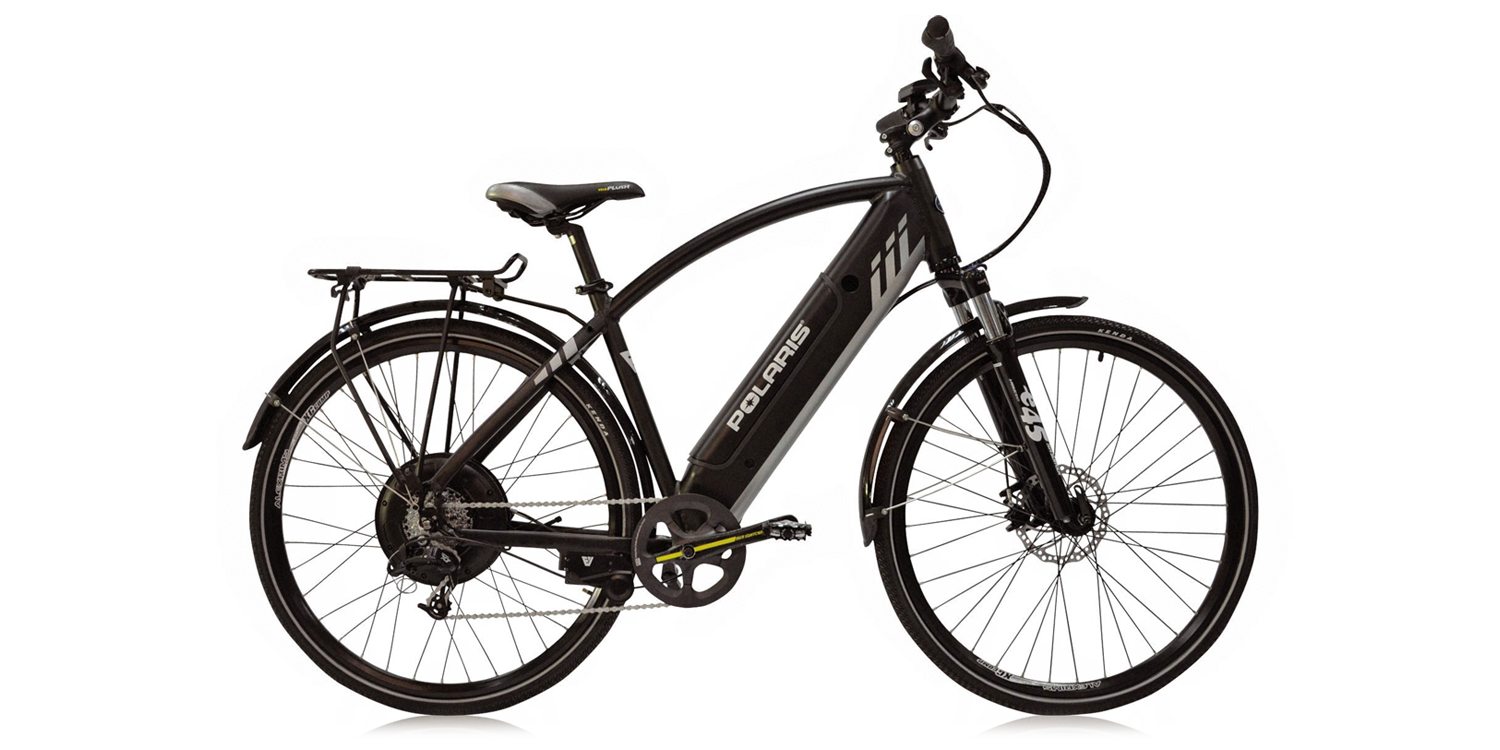
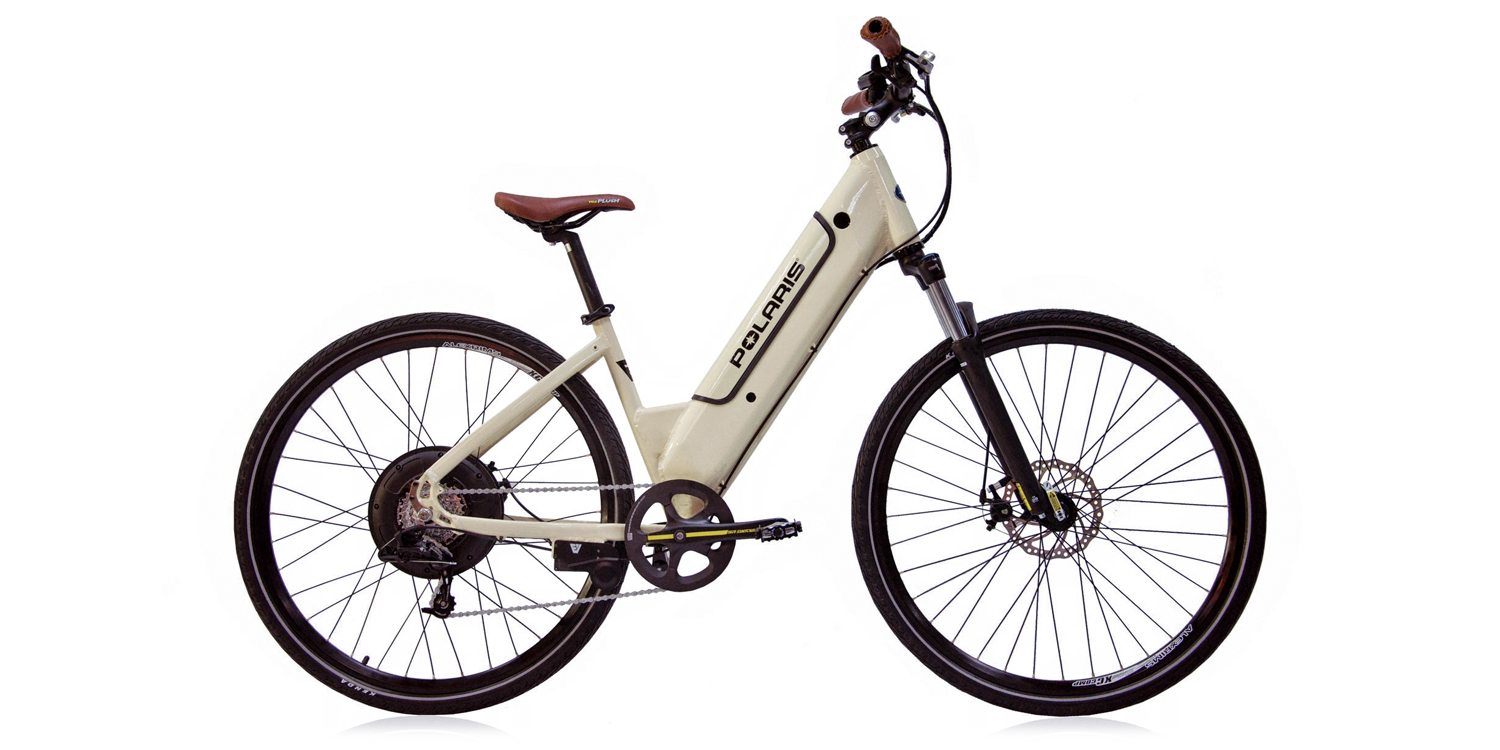
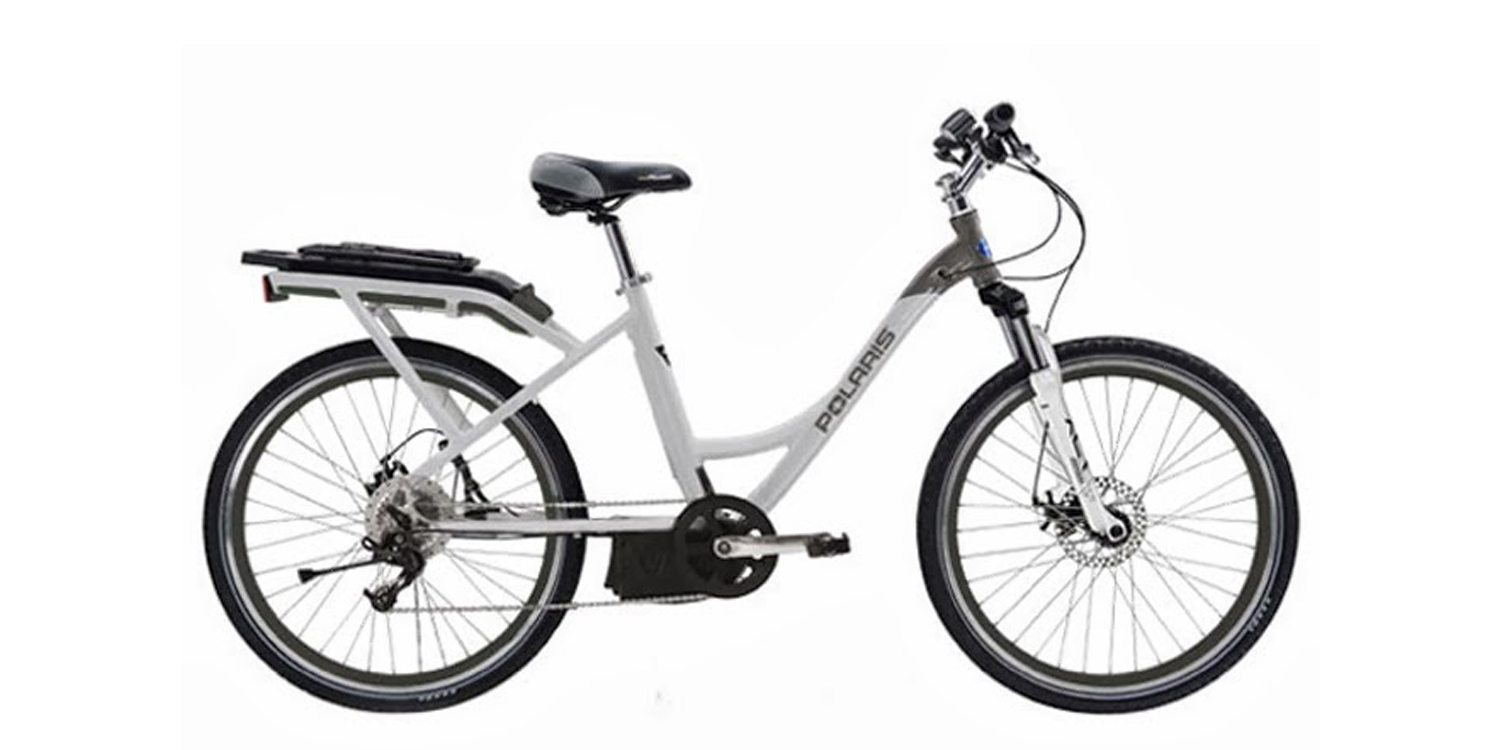
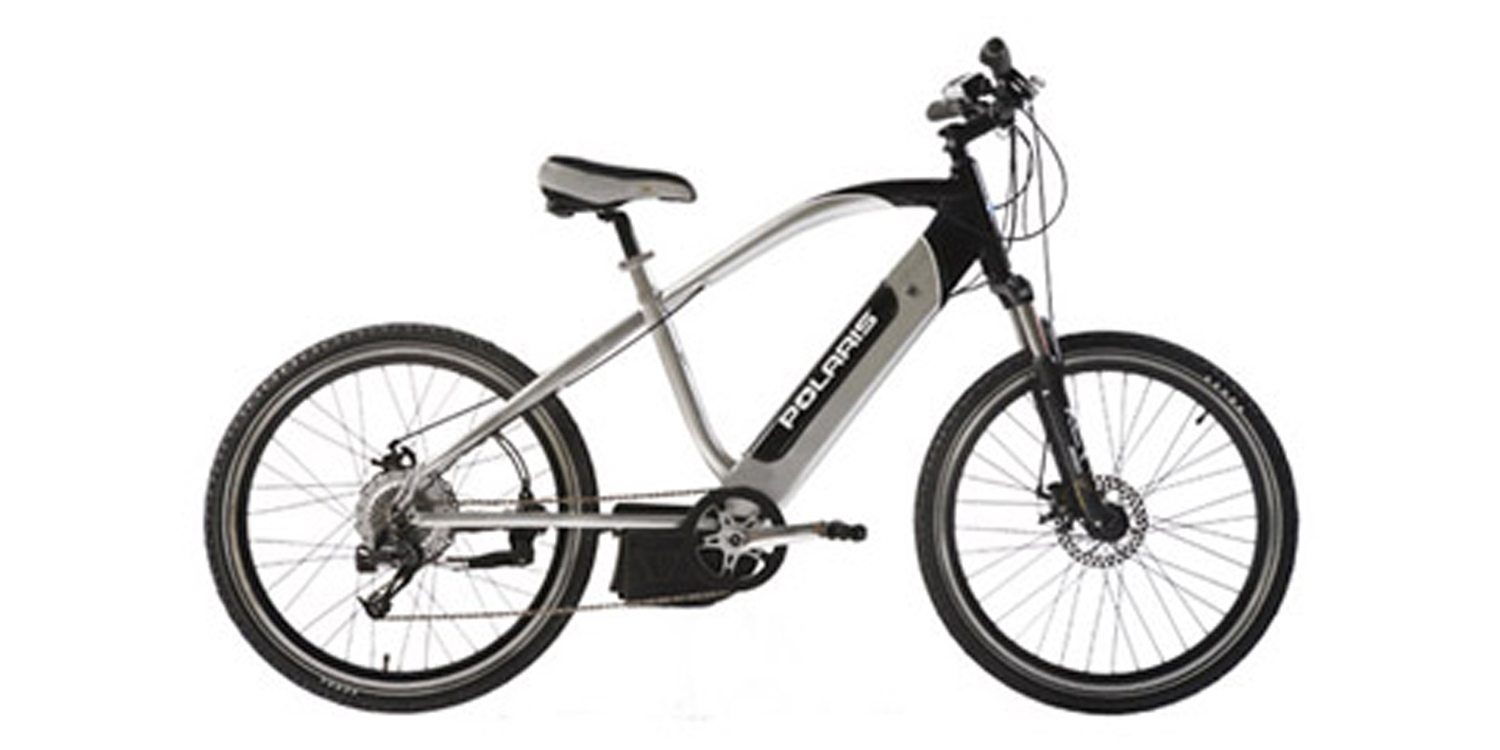
Reader Interactions